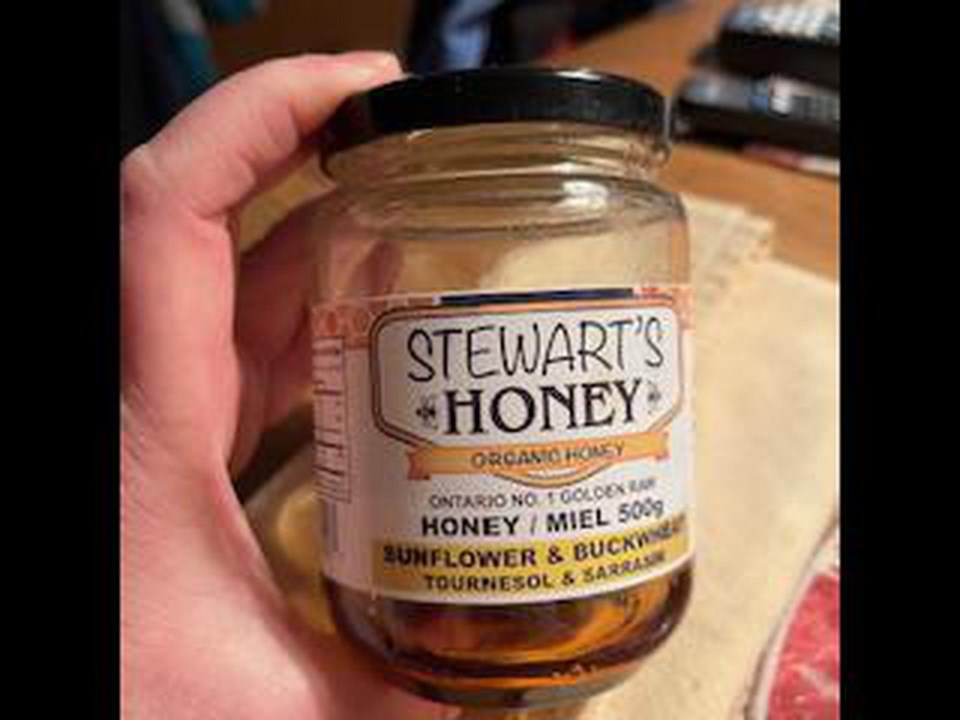Loss of natural habitat is taking a toll on honey bees, warns a local producer.
Honey production dropped 20 per cent in the past year, according to Statistics Canada, and a survey by the Ontario Beekeepers’ Association noted commercial beekeepers suffered over 50 per cent loss in hives in 2024. Commercial and small-scale beekeepers suffered heavier losses than the previous year.
As beekeepers enter the winter of 2025, concerns of keeping their bees alive and healthy are front of mind.
Stewart’s Honey is an award-winning producer in South Glengarry with 16 organic fields totalling 1,000 acres that are not sprayed with pesticides. Yves Lalande and Margaret Stewart, owners of the farm named after Margaret’s father George, said, “We as beekeepers have a responsibility on our shoulders to provide a safe haven for them to forage in. Our bees have done an amazing job bringing in pollen and nectar.”
The Ontario Beekeepers Association survey cited several reasons for the loss of hives -- high Varroa mites’ levels, large external parasites that attach themselves to honey bees and can cause the complete failure of the hive if not managed effectively, fluctuating winter temperatures and weak colonies.
However, Margaret Stewart feels the drastically changing environment is the main culprit for the decrease in honey production. Natural habitat loss has resulted from the removal of treelines and beneficial weeds to make way for crops. “If a honey bee has to fly a half a mile or a mile every time she leaves the hive, chances are she will not live out her short lifespan of 30 days,” said Stewart. To keep a hive at a proper survival level, the queen must lay 1,200 to 1,400 eggs a day.
Spraying for weeds is of concern for any beekeeper. As well, creeks and streams have evidence of herbicide runoff.
In natural fields where the Stewarts keep their hives, nature is able to do its job, with the assistance of pollinators, keeping the honey bees well fed and in close proximity to their hives. In Canada, efforts are being made to create pollinator pathways – lengths of land with natural plants, free of pesticide use, to provide habitat and food for all pollinators. Hydro lines, wind farms and ditches are excellent means of connecting pollinators to natural fields.
Each field at Stewart’s Honey Farm produces different flower-honey varieties, from dandelion, apple, clover, lavender, buckwheat and sunflower and even late fall golden rod.
At Stewart’s Honey Farm, bees have wintered in the same fields from which they collected pollen and nectar the previous year. New bees, born in late December, feed from within the hive on pollen and honey and know where to start gathering pollen and nectar as soon as temperatures rise.
Honey is extracted before the hexagon chamber of the hive is filled and sealed by the bees. This process, which can take up to two weeks to complete, ensures the honey remains raw, full of probiotics and healing powers. The apiary includes a 40-foot by 20-foot honey house with a heated cement floor that maintains a temperature of 86 degrees all winter to keep the honey in its pure form.
With such a short season for gathering honey in Ontario, beekeepers must cultivate as much as possible to meet demands and have a successful enterprise. However, profit can’t undermine best practices, environmental protection and care for the hives to produce the highest quality product. Stewart says healthy fields make the most delicious honey. “Each day, new adventures arise in the art of honey magic on this beautiful land we call home,” said Margaret. “Bee safe!”
